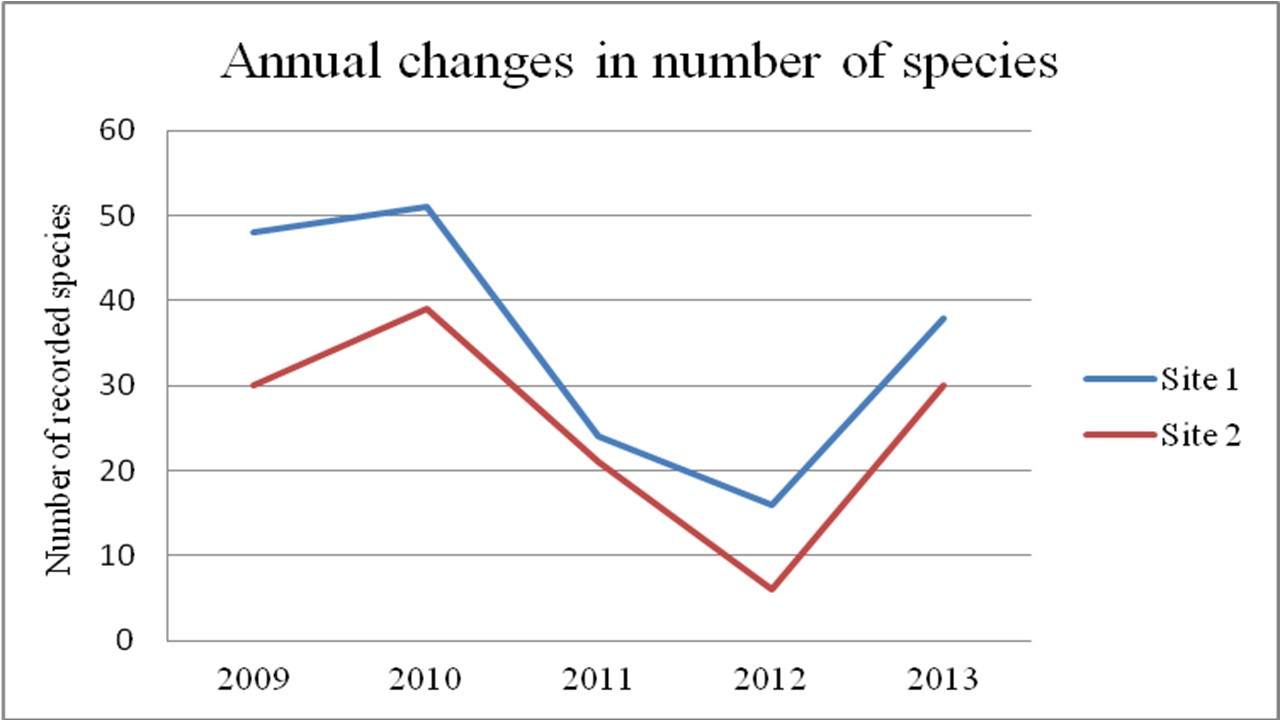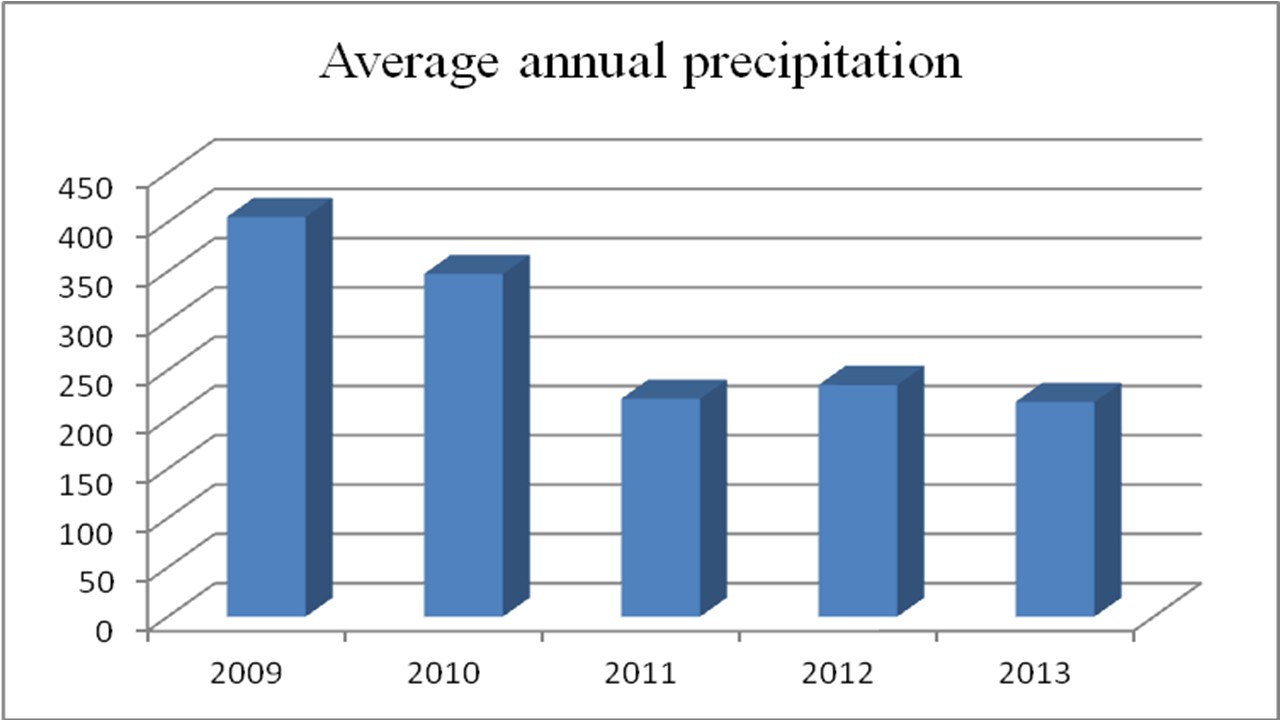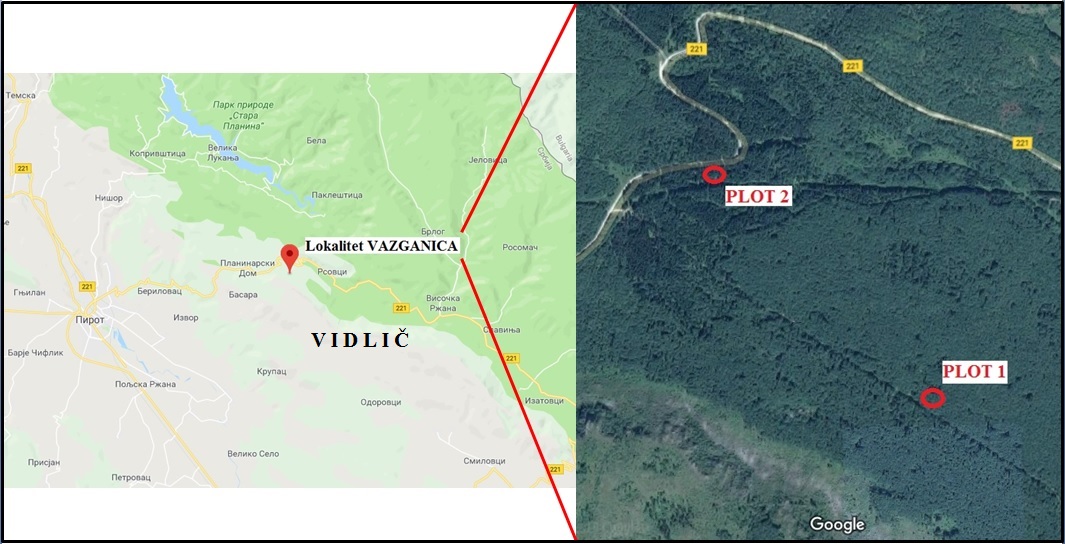Key message: The number of mushroom species in the forests is reduced
Assessment: Macrofungal production is characterised by a high inter-annual variability which is closely linked to variations in weather conditions from one year to the next. Mushrooms generally flourish under warm and wet conditions. Source data are the fungal species collected from 2 permanent investigation plots (size of the plot: 1,000 m2) within 2 different forest habitats on Mt. Vidlič, locality Vzganica, visited four times each year in the period 2009 – 2013. In the long-term study conducted on Mt. Vidlič (locality Vzganica) in the period 2009-2013, we observed that macrofungal species richness (number of detected species) was in correlation with several abiotic factors. Decline in annual precipitation, relative air humidity and soil moisture was followed by a decline in the recorded number of macrofungal species. On the contrary, increase in the value of above factors led to increase in the number of species. Therefore, it can be expected that the trend of climate change towards more arid conditions in Serbia would lead to the declining of macrofungal communities, as well as changes in species composition. This would inevitably lead to a change in the accompanying vegetation and cause a disturbance of natural processes in which macrofungi are involved.


Indicator Name: Number of fungal species in selected forest habitats
Institution/Author: Department of biology and ecology, Faculty of Sciences, University of Novi Sad/dr Maja Karaman, MSc Milana Rakić
Use and interpretation:
Key question(s) which indicator helps to answer – number of fungal species indicates the condition of the whole fungal community and, consequently, the condition of the specific forest habitat
Use of indicator – to indicate: biodiversity refugia (using an old growth forest associated fungal species), potential ecological disturbance (human impact – different management actions and fragmentation of habitats; pollution; climate change)
Scale of appropriate use – long-term monitoring within permanent plots (selected and marked investigation areas)
Potential for aggregation:
Meaning of upward or downward trends (“good or bad”)
Upward trends or stable trends – indicate a good condition of mycocommunity, as well as their habitat, as a consequence of low or no ecological disturbance
Downward trends – indicate a bad condition of mycocommunity, as well as their habitat, as a consequence of ecological disturbance
Possible reasons for upward or downward trends:
Upward trends or stable trends – i.e. good forest conservation strategies, low or no pollution, favourable climate conditions
Downward trends – i.e. bad forest management strategies, high pollution, unfavourable climate conditions
Implications for biodiversity management of change in the indicator:
Units in which it is expressed:
Number of detected species
(e.g. km2, number of individuals, % change)
Description of source data:
Source data are the fungal species collected from 2 permanent investigation plots (size of the plot: 1,000m2) within 2 different forest habitats on Mt. Vidlič, locality Vzganica, visited four times each year in the period 2009 – 2013.
(origins, dates, units, sample size and extent, custodians)
Calculation procedure:
Basic counting of the species present at the investigation site
(include appropriate methods and constraints for aggregation):
Most effective forms of presentation:
Graphs and narrative explanations of different observations
(graph types, maps, narratives, etc.-give examples where possible):
Limits to usefulness and accuracy:
Need for long term monitoring data
(e.g. slow change in response to pressures, poor quality data, limited scope for updating)
Updating the indicator:
Every year
(how often? What is the process?)
Closely related indicators
Abundance of fungal species – number of fruiting bodies per species
Additional information and comments
- Project III 43002 , funded by the Ministry of Education, Science and Technological
Development of the Republic of Serbia
- Rakić, M., Karaman, M., Forkapić, S., Hansman, J., Kebert, M., Bikit, K., Mrdja, D. (2014): Radionuclides in some edible and medicinal macrofungal species from a Tara Mountain, Serbia. Environmental Science and Pollution Research, 21(19):11283-11292. DOI: 10.1007/s11356-014-2967-8
- Novaković, M., Karaman, M., Marković, M., Matavulj, M., Rućando, M., Trudić, B. (2012): Survey of Macrofungal Diversity in the Forest Ecosystems of Stara Planina, Kopaonik and Tara. In: Proceedings of International Scientific Conference “FORESTS IN FUTURE-Sustainable Use, Risks and Challenges”, 4th-5th October 2012, Beograd, 2012. Beograd; ISBN 978-86-80439-33-4

Serbia










